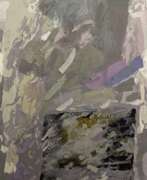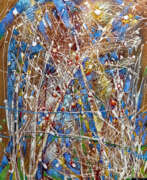Lyrical abstraction

Lyrical abstraction
Lyrical abstraction is an art movement that originated in post-World War II Europe, particularly in France, and found its way to the United States in the 1960s and 1970s. It's a movement that reflects a personal expression through art, with a focus on spontaneous, gestural brushwork and an emphasis on color and emotion rather than representational forms.
Characterized by its intuitive and loose paint handling, lyrical abstraction often employed new technologies like spray guns, allowing the viewer to experience the painting as an object rather than a traditional canvas. This style of art sought to express inner realities and was a direct reaction to the trauma of the war, providing artists a means to distance themselves from societal constraints.
The movement includes significant contributions from artists like Georges Mathieu, who was known for his performance art and calligraphic style, and Jean-Paul Riopelle, noted for his spontaneous color jets. In the United States, artists like Ronnie Landfield, who participated in exhibitions at the Whitney Museum and others, became notable figures in American Lyrical Abstraction.
Lyrical abstraction offered a new direction in painting that moved away from minimalism and toward a freer form of expressionism, closely related to Abstract Expressionism and Color Field painting. It was a departure from the geometric, hard-edge, and minimalistic tendencies that previously dominated the art world. The movement was celebrated for its dynamic, expressive qualities, and its artists often experimented with large formats and public performances.
This movement was not just an art style but a significant shift in the art paradigm of the time. It allowed artists to explore new forms of expression and provided the art world with a richer understanding of abstract art's potential. Major exhibitions of lyrical abstraction took place at institutions like the Sheldon Museum of Art and the Boca Raton Museum of Art, further solidifying its place in art history.
For collectors, auctioneers, and art and antique experts, lyrical abstraction remains a fascinating and vital aspect of modern art. Its historical significance and the emotional depth of the works continue to resonate with audiences today. Those interested in this unique form of expressionism may sign up for updates on new product sales and auction events related to this significant movement.
| Country: | Europe, France |
|---|---|
| Start of the period: | 1945 |







